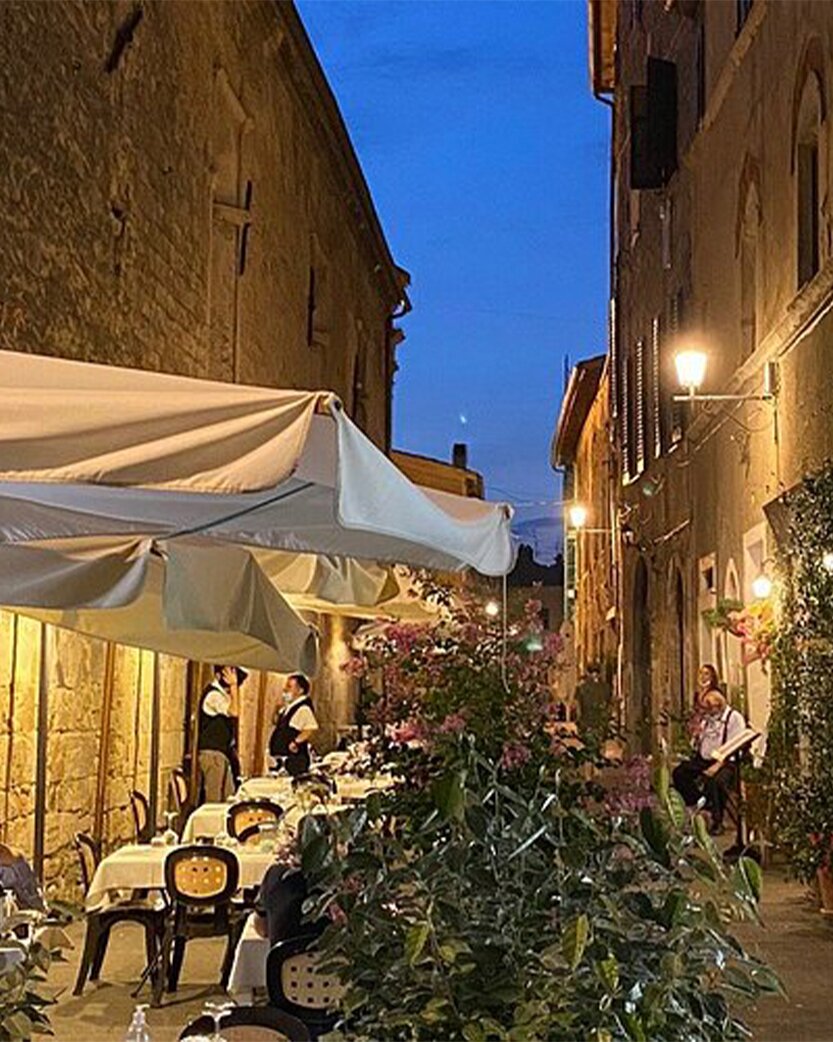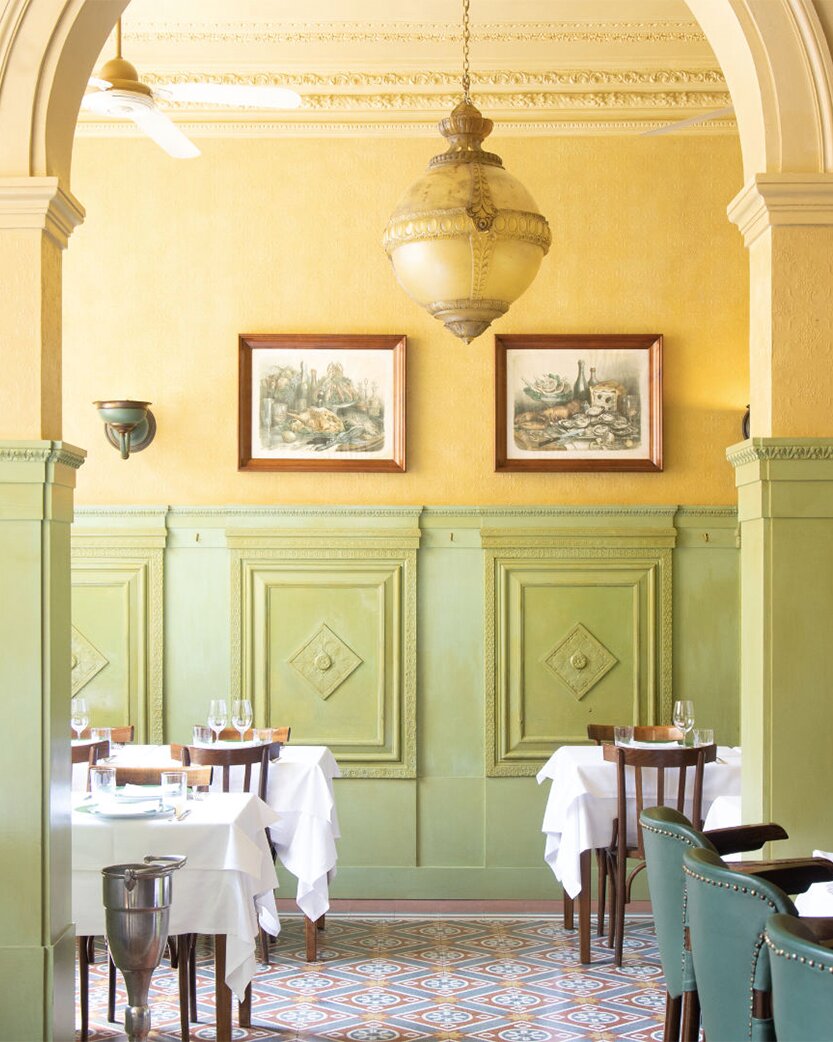Patterned Wool Coat,
Duro Olowu

Founder & Editor in Chief of Cabana
I took one solitary journalism class at University and the first thing they tell you is to get all the crucial information about your subject across in the first paragraph. Writing now, in a time of image-centric web formatting and ever-decreasing attention spans amongst readers, this guideline has basically become gospel. For the most part it’s simple enough, but what does one pluck out as the leading information about Martina Mondadori? Is it her Italian upbringing as heiress to the hugely influential publishing powerhouse that she shares her family name with? Perhaps it was the years spent travelling the world, cultivating the collector’s instinct and curator’s eye that would go on to serve her with such distinction as founder and editor-in-chief of the much celebrated magazine,Cabana. Maybe its her own familial tendencies that have seen Martina settle with such aplomb into the magnificent Kensington home she now shares with her husband and two (very soon to be three!) children.
Of course, the answer is that any attempt at a definitive ‘hook’ is inherently reductive: it is impossible to isolate any one of these conversational strands that emerge over the course of a relaxed afternoon with Martina in her home. Instead, as the first hesitant rays of June sunshine dance about the boldly colourful fabrics adorning her first floor living room, it becomes apparent that Martina’s life is subject to the same ebb and flow as the trends she witnesses across the
worlds of fashion and interiors: “It’s cycles, as with everything. You can’t just keep on going with only black and white forever…”
The subject of ‘cycles’ comes up more than once, notably when discussing the vision for Cabana,and the distinctive voice it has carved out for itself amongst the glut of interiors and design-focused titles out there. Unabashedly vibrant and tactile (each biannual issue features textile covers), it was predicated, says Martina, by a disillusionment with minimalism and industrial design: “the comeback of unique pieces, of the importance of craft, texture and layering.” Martina is also quick to describe the publication as a lifestyle one. Its an oft-overused descriptor but to hear Martina use it in relation to Cabana you’re struck by just how much the emphasis elsewhere is usually placed on the style part of that phrase, at the expense of the life. Martina sums it up succinctly during a conversation about instagram (of which she’s generally a huge fan): “When a big star or celebrity says something like, ‘oh I can’t live without my Manolo Blahniks’ – maybe it’s true but maybe there’s some huge contact behind that…” Flipping through the pages of Cabana then, one thing you get above all others is a sense of life – of journeys taken and inspiration run wild. “People travel much more, so when you go to the Middle East, to Africa, to South America… It’s not something you’re scared of, and it doesn’t look ‘too rich’ or ‘too old’”.
There’s also the name of the magazine itself, which instantly conjures a different mood to the more
conservative and stately alternatives out there: “Cabana is not only about the lavish Roman palazzo or Chatsworth House,” says Martina. “It can be a lodge – or a cabana! – because the chic
of an interior can be literally anything as long as it is authentic and layered. Nothing [resonates] like
a mix of amazing art pieces and flea market finds. That’s the fun of it.”
For 30104, it seems that ‘authenticity’ – that crucial weapon in the arsenal of the aesthete – is found by looking outwards. It makes a refreshing change, perhaps now more than ever, from many contemporaries who retreat into themselves in search of the same thing. This expansive perspective arguably informs everything Martina does, from pioneering collaborations (most
recently, Cabana worked with Alessandro Michele and Gucci on a bespoke set of chairs and magazine covers) to a defiant love of flea markets around the world.
It also leads to eloquent and thoughtful discussions about the ways we negotiate a time of increasing uncertainty and bleakness. One statement echoes as our conversation comes to a close and a staircase descent becomes the impossible task of trying to drink in every lovingly
selected, gloriously eclectic, perfectly lived aspect of Martina’s home – a home that both informs
and is informed by Martina’s vision of Cabana:“When the world out there can be so cruel… you want to feel cosy when you’re back home.”
Text by James Darton for Semaine.
Martina’s coastal escape in Bassa Maremma area in Italy. It is the southern strip of Tuscany, not too far from Rome. It is countryside overlooking the most beautiful sea…
The towns to visit are Magliano in Toscana, Manciano, Capalbio and the most amazing sea is to be found in the Parco dell’Uccellina that you can only reach by boat. The culinary experience is beyond with my favourite restaurants being Da Sandra in Magliano and I due pini in Santo Stefano. The wine is also very famous there, Morellino di Scansano.

One of my favorite restaurants
Via Giuseppe Garibaldi, 20, 58051 Magliano in Toscana,
Italy

In my hometown, when I am there I always try and have dinner or lunch Da Giacomo. The restaurant was originally decorated by Renzo Mongiardino who also decorated all my family homes and is the main inspiration behind Cabana
Via Pasquale Sottocorno, Via Benvenuto Cellini, 6, 20129 Milano,
Italy

Become a member today to enjoy all our Tastemakers address recommendations on our interactive travel guide world map!
SUBSCRIBE NOW